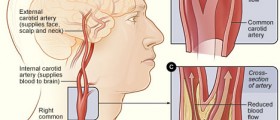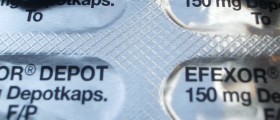
TIA or transient ischemic attack is something like stroke but unlike the actual stroke in case of transient ischemic attack all neurological deficits are quickly and completely restored. This neurological disorder is also known under the name a mini stroke. It is a warning sign of a potentially forthcoming stroke and should, therefore, never be neglected. It is estimated that 1 out of 3 people who have experienced transient ischemic attack eventually has a stroke. Also a half of the stroke occurrences are reported within a year after TIA.
When to See a Doctor?
A transient ischemic attack may actually be a perfect warning about what might happen if one does not change certain habits in his/her life and bring all underlying diseases under control. It is also considered a great opportunity since there is no permanent damage to the brain and one may continue with his/her life being ready to do what ever it takes to prevent stroke.
TIA lasts for a few minutes while neurological abnormalities may linger for an hour. Symptoms and signs of the attack are actually quite similar to those in early stages of stroke. For instance, a person may experience sudden weakness, numbness or paralysis of the face, upper or lower extremity that typically occurs on one side of the body. Furthermore, the speech may become slurred or garbled. One may even have problems understanding others when they speak. Double vision or transient loss of vision may occur as well. Finally, there are dizziness, loss of balance and coordination. Now, if any of the mentioned occurs, one is due to contact a health care provider without hesitation. Symptoms and signs that linger for at least 24 hours are common for stroke. So, by neglecting sudden health issue one may allow transient ischemic attack to progress into severe form of the disease.
As it is the case with a stroke, in people suffering from transient ischemic attack there is a blood clot in some artery of the brain, blocking blood flow and depriving certain portions of the brain of oxygen and other nutrients. In TIA the blood clot soon dissolves on its own. In stroke, however, the blood clot remains undissolved for a certain period of time and is many times blamed for irreversible damage to the affected part of the brain.
Risk Factors You cannot Change
We can change certain factors that contribute to TIA and stroke. Others cannot be controlled at all. However, not each and every individual with risks of suffering from TIA will actually end up with the disease.
Family history of TIA and stroke and older age are two major and uncontrollable contributors to stroke. Also, being a man makes one more susceptible to these neurological disorders. Finally, there are certain differences when it comes to race and the risk of stoke and TIA. Namely, the risk is much higher in black people maybe because they are also more prone to elevated blood pressure and diabetes, both of which are closely connected with stroke.
The risk is additionally high in individuals suffering from sickle cell disease, hypertension, cardiovascular diseases such as heart failure, heart defects or abnormal heart rhythm, carotid artery disease and peripheral artery disease, smokers, physically inactive people, those suffering from diabetes, people who consume large amounts of fat and salty food. Furthermore, high cholesterol, high level of homocysteine, excess weight, heavy drinking, use of illicit drugs and use of birth control pills are all confirmed risk factors for TIA and stroke.
What can you Do?
The first thing a person should do is consult his/her health care provider and see whether he/she is at risk of TIA or stroke. By identifying risk factors one may introduce lifestyle changes and initiate the process of prevention. Now, since not all factors that contribute to stroke are preventable and cannot be brought under control a person should pay attention to factors that can be controlled.
For instance, levels of blood pressure and cholesterol can be maintained within optimal range with proper diet and exercise and in more complex cases with prescribed medications. Furthermore, one may undergo certain imaging studies that will show the presence of atherosclerosis and even identify tiny little blood clots that have not separated from the wall of the blood vessels yet and moved towards the blood vessel of narrower diameter causing TIA/stroke. These blood clots may be successfully dealt with anticoagulants. Anticoagulants are in general prescribed to all people at risk of increase blood clotting. Anti platelet drugs are equally beneficial because they prevent platelets from accumulating on the surface of already damaged blood vessels. Patients suffering from diabetes should have impeccable control over their disease. Each and every person must abstain from illicit drugs and limit intake of alcohol.
Finally, moderately or severely narrowed carotid artery represents a huge risk factor for both TIA and stroke. This problem can be dealt with carotid endartectomy. Another surgical procedure that might help these patients is angioplasty or stenting.









-Disease-Cause-A-Stroke_f_280x120.jpg)







Your thoughts on this
Loading...